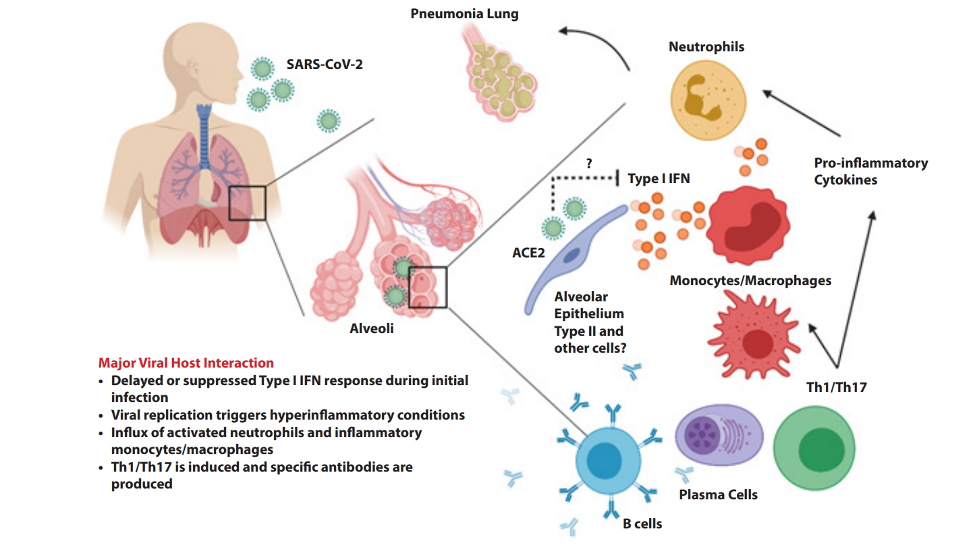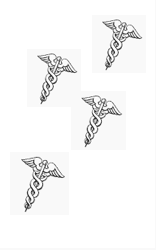
Practices cannot survive the COVID-19 cash flow crisis
By JEFF LIVINGSTON, MD
Will doctors be able to keep their practices open during the worst pandemic in our lifetime? Our country needs every available doctor in the country to fight the challenges of Covid-19. Doctors working in independent practices face an immediate cash flow crisis threatening their ability to continue services.
The CARES Act was signed into law on Friday, March 27, 2020. The law offers much-needed help to the acute needs of hospitals and the medical supply chain. This aid will facilitate the production of critical supplies such as ventilators and PPE. The law failed to consider the needs of the doctors who will run the ventilators and wear the masks.
Cash flow crisis
Private-practice physician groups experienced an unprecedented reduction in in-office visits as they moved to provide a safe and secure environment for patients and staff. In compliance with CDC guidelines, practices suspended preventative care, nonurgent visits, nonemergent surgery, and office procedures.
These necessary practice changes help keep patients safe and slow the spread of Covid-19. The unintended consequence is an unreported and unrecognized cash flow crisis threatening the viability of physician practices.
The number of self-employed physicians in the US is decreasing. The AMA’s annual Physician Practice Benchmark Survey showed that 47% of all physicians in 2018 were employed. This statistic is misleading as only a fraction of the employed physicians are employed by large hospital systems and health conglomerates who will have the cash flow and resources to manage through the crisis. Physician-owned practices employ the rest.
Many feel physicians are wealthy and do not need assistance. Some doctors are financially well-off and others are not. The personal net worth of a business owner is not relevant in the balance sheet of a business. A catastrophic drop in cash flow is the issue requiring corrective action.
We ask physicians to fight on the front lines, risking their lives without PPE and equipment. Doctors and nurses are getting sick. Some will die. We know it, and we are proud to put our life on the line in service to our nation.
As a society, we must stop and take a moment to think about what we are doing. The majority of US physicians are committed to serving and risking their lives. We are also asking them to lose their livelihoods.
New revenue opportunities
CMS removed restrictions to allow expansion of virtual care through Waiver 1135. Many practices have rapidly expanded their services to implement Telehealth. The harsh reality is that many practices in our country do not have the IT capacity to implement a complicated solution in an expedited manner. Even for those who are able, the revenue generated by virtual care will not offset the lost revenue from the reduction of services.
Telehealth alone is not enough to save healthcare workers jobs. It is a tiny drop in an empty bucket.
Who is at risk?
Practice managers scramble to evaluate options offered through the SBA disaster programs. Provisions in the CARES act prohibit the inclusion of those making above $100,000 in the forgiveness programs for SBA loans. Most practices employ physicians through long term contracts.
Contractual obligations extend beyond doctors. Providers affected include all non-physician providers who extend service and are critical to the health team. This includes Nurse Practitioners, Physician Assistants, Certified Nurse Anesthetists, and Certified Nurse-Midwives.
There is a domino effect that follows physician job loss. Staff in supporting roles for these providers will lose their jobs. A good rule of thumb is three staff members are employed for each physician or non-physician provider. The reduction of one non-physician provider causes three more people to lose their job. Staff falls below the forgiveness threshold, but if the provider is unemployed then staff reductions will follow.
Every contracted health care provider in America who falls above the forgiveness threshold is at risk of losing their jobs. This transcends physician specialty.
Let this sink in. In the middle of the Covid-19 crisis, every doctor and healthcare worker in every specialty in America is imminently at risk of unemployment.
Why is this happening so fast?
Private medical practices function similarly to others in the services industry. Revenue is generated through services rendered. Like any business, revenue is used to make payroll, purchase medical equipment and supplies, software dues, rent, and utilities. Medical practices also must pay for janitorial services, electronic medical records licenses, practice management systems, and equipment leases. While health insurance, phone systems, and retirement plans were covered in the CARES act, the above list was not.
Unlike traditional service industry companies, medical practices are not compensated for services rendered at the time of the transaction. Instead, charges are filed through a third-party payer (Medicare, Medicaid, or an insurance company). When we go to a drive-thru restaurant, we order and pay for our food on the spot. Healthcare services do not function this way.
Red tape associated with our country’s revenue cycle management system creates a lag in payment. Payments are not received for up to 3 months. In my field of obstetrics, no fees are collected until weeks after delivery as pregnancy is paid globally. This lag in payment exacerbates the cash flow crunch for medical practices.
Action is needed now
Medical providers need coordinated action now. We can not wait for private industry solutions. It is not practical for every practice in the country to negotiate terms with each landlord and vendor individually. It is not possible to evaluate all agreements with each pharmaceutical, device, medical supply, and every insurance company. This is not a scalable solution.
Here is the reality. Without immediate governmental action, practices around the country will fail. The US will be faced with an unprecedented crisis of unemployed physicians right at the potential peak of the Covid-19 pandemic.
Today CMS took positive steps with the Accelerated Advanced payment system. This corrective measure only applies to Medicare payments and does not apply to Medicaid or third-party insurance.
Here are actionable items that will help allow doctors to stay in business and help the US health system navigate through the pandemic.
1. Expedited health care provider credentialing process. Allow immediate authorization of any licensed provider, in good standing with their state’s medical board, to provide all services for Medicare, Medicaid, and any third-party insurance plans. The credentialing process can take between 90–120 days. As doctors get sick and die, there is no time for bureaucratic red tape. CMS expedite credentialing nationally for Medicare and third-party payers. Governors can mandate expedited credentialing for state-run Medicaid plans. This simple step will allow providers to contribute immediately and keep patients alive as physicians get sick and die.
2. Moratorium on medical office evictions. Commercial protection against eviction is needed for medical practice office leases during the pandemic. Texas Governor Greg Abbott passed protection for residential leases. Medical practices need similar protection. A mandate could be identical to the executive action announced by California Governor Gavin Newsome.
3. Suspend out-of-network penalties. It is not safe to enforce network restrictions during the pandemic. Allow physicians and patients to seek care in hospitals and medical sites of service not experiencing capacity limitations. We need the freedom to direct care where it is safe and where there is room. This will reduce the burden on hospital capacity.
This logical and necessary action will save lives. CMS can enact this simple step for Medicare and third-party payers. Governors can mandate this step for state-run Medicaid plans. Failure to do so will cost lives.
4. Suspend the reduction in reimbursement for nonphysician providers. Nonphysician providers are a critical part of the health team. Nonphysician providers include Nurse Practitioners, Physician Assistants, Certified Nurse Anesthetist, and Certified Nurse-Midwives. Currently, they are reimbursed at a lower rate than physicians for the same services.
As physicians begin to contract Covid-19, all available providers will be needed. Care provided by nonphysician providers should be reimbursed at the standard physician rate.
5. Waive Clia restrictions to allow and encourage point of care testing Physician practice sites will be essential to scaling up widespread Covid-19 testing. New FDA approved point of care Covid-19 tests are coming to market. Waiving restrictions will allow for an orderly rollout. Containment of the virus is dependent on our ability to test. We can not lose lives while we wait for Clia certifications.
6. Extend Postpartum Medicaid benefits to one year Medicaid coverages vary by state. Currently, in Texas women transition off Medicaid sixty days postpartum. Extending benefits will provide healthcare access to low-income women and reduce hospital burden by avoiding ER visits.
Tubal ligations are not being scheduled due to the mandated postponement of elective surgery. Low-income women will not have family planning coverage when the pandemic is over. Each state must determine eligibility for Medicaid for postpartum women. The result of this action will be fewer unwanted pregnancies, give women control over their bodies, and reduce abortions.
7. Remove restrictions on Ambulatory Surgery Centers The idea of reducing elective surgery was sound. Unfortunately, broad statements by the CDC lead to a variety of conflicting resolutions by various medical specialty governing boards. ASC utilization decisions should be made locally by their medical board and medical directors. Ambulatory surgery centers play a key role in reducing hospital burden and preventing local hospitals from reaching surge capacity. Medical directors need the freedom to work with local hospitals to guide patients to the safest possible treatment options.
8. Exempt Healthcare providers from the $100K threshold for debt forgiveness One of the purposes of the CARES act is to maintain a functional healthcare system to save lives during this pandemic. Allowing healthcare providers to be included in the SBA disaster relief debt forgiveness program would help us achieve the goal.
9. Mandate extended payment plans Physicians were hoping to see legal requirements in the CARES act requiring vendors to extend payment options to medical practices. Unfortunately, this did not occur. Practices need extended terms for all items in the medical supply chain including vaccines, devices, equipment leases and pharmaceutics to allow us to function during the pandemic.
There is no easy solution to this problem. I suggest Congress enact the mandated matching receipts of physician practices with payments to vendors for supplies and equipment. For example, physicians are reimbursed by insurance carriers on a delayed revenue cycle. Reimbursement is typically delayed up to 3 months. Congress could mandate vendors are not paid until the practice is reimbursed by Medicare, Medicaid or third-party payers.
Time is crucial
Medical practices across the country need a lifeline to stay in business. The United States passed 139,000 Covid-19 cases today. When this article is published, that number will be higher. The death toll will rise. I can’t believe I have to say it, but doctors and non-physician providers are needed to help manage the Covid-19 pandemic.
We will put on our lives on the line for our patients.
Isn’t our Government willing to save ours?
Jeff Livingston, MD is an OBGYN practicing in Texas.
The post Immediate Changes Needed for Physicians to Stay in Business During the Pandemic appeared first on The Health Care Blog.
from The Health Care Blog https://ift.tt/2vZRJWO

















